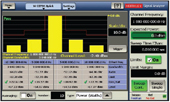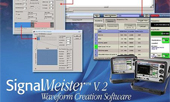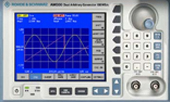General Information
As a result of the structural changes of the Alliance and due the new dimensions of the modern battlespace, the NATO communications structures have imposed the concept of a joint informational communications system.
The main directions of development derive from the JOINT 2000 concept and envisage attaining supremacy in the entire spectrum of activities by obtaining information superiority (having effect upon the decision making process), by innovations pursuing the improvement of the operational capabilities and by their integration at the system, operational and technical levels in order to allow multinational operations.
Because Romania needs to integrate into the NATO structures, the communications systems of the Romanian Army need to fulfill a minimum set of interoperability requirements with similar NATO systems. Therefore, it is necessary to analyze the existing resources and capabilities, as well as the ones that are to be purchased. This analysis has to identify the necessary architectural characteristics which provide interoperability and the steps and actions to be followed in order to attain interoperability.
The project addresses all these issues and aims to:
- Analyze the communications strategies used in the NATO Common Operating Environment (COE).
- Study the capabilities of the tactical communications equipment in order to use them in complex system architectures and applications.
- Model, simulate and analyze the capabilities of the tactical communications systems by dynamically controlling the characteristics of the component elements and by efficiently managing the available resources.
- Elaborate a strategy regarding the selection and training of the human resources involved in operating the tactical communications systems.
Objectives planned for 2007
1.Identifying and characterizing the technical solutions necessary for implementing interoperability between the communications systems of the NATO member countries.
2.Estimating the interoperability requirements in the field of informational communications systems.
Objectives attained in 2007
1. Characterizing the concepts and the technologies which are specific to the NATO interoperability environment: Network Centric Warfare (NCW), NATO Network Enabled Capabilities (NNEC), Future Combat System (FCS), Joint Tactical Radio System (JTRS), Software Defined Radio (SDR).
2. Identifying the capabilities of JTRS technological resources from the perspective of estimating the interoperability requirements in the NATO Common Operating Environment.
Objectives planned for 2008
1. Characterizing complex SDR waveforms.
2. Evaluating the JTRS equipment capabilities.
3. Characterizing the human resources operating JTRS equipment.
4. Evaluating the performances of the personnel operating JTRS equipment.
5. Identifying and characterizing the disturbing factors which could affect JTRS operations.
Objectives attained in 2008
1. Evaluating the VHF, HF and HCDR equipment capabilities and characterizing narrow and wide band waveforms specific to the SDR technology. Identifying the capabilities of JTRS resources by estimating the interoperability requirements of a common NATO operational environment
2. Identifying several variables representative of HR evaluations, with a view to improving the capabilities of systems integrated into effects-based operations.
3. Identifying and characterizing the disturbing factors which could affect JTRS operations.
Objectives planned for 2009
1. Characterizing the transmission environment for different electromagnetic scenarios.
2. Estimating the enemy activities trying to intercept and impede JTRS communications.
3. Identifying and characterizing individual particularities which affect the decision making in the military communications environment.
4. Evaluating the risk of human exposure to electromagnetic fields generated by JTRS radio sources.
5. Optimally dimensioning the joint tactical radio systems (forces and equipment) in transmission environments specific to military applications.
Objectives attained in 2009
1. Characterizing the transmission environment for different electromagnetic scenarios.
2. Estimating the resistance of JTRS-specific wave forms to electronic warfare.
3. Analyzing the performances of the human resource operating JTRS equipment.
4. Identifying and characterizing the individual particularities which affect the decision making in the military communications environment.
5. Evaluating the risk of human exposure to the electromagnetic field generated by JTRS radio sources.
Objectives planned for 2010
1. Evaluating the capabilities of tactical radio systems (forces and equipment) in the presence of perturbations.
2. Identifying and evaluating alternative informational communications modules (platforms) equipped (with forces and means) for accomplishing multinational missions.
3. Formulating a proposal regarding the structure of an integrated tactical communications system in a standardized environment.
Objectives attained in 2010
1. Evaluating the capabilities of tactical radio systems (forces and equipment) in the presence of perturbations.
2. Identifying and evaluating alternative informational communications modules (platforms) equipped (with forces and means) for accomplishing multinational missions.
3. Formulating a proposal regarding the structure of an integrated tactical communications system in a standardized environment.




